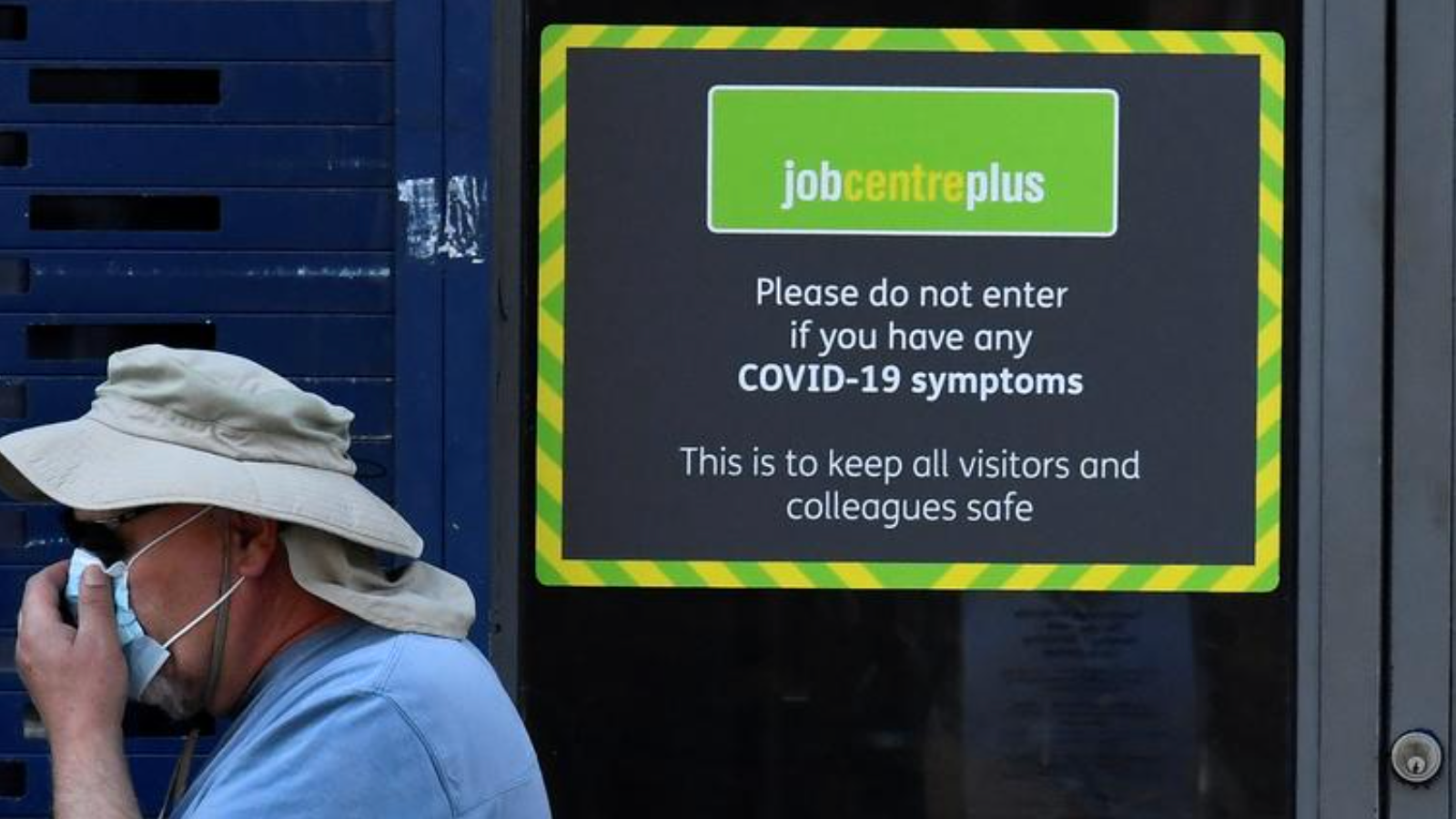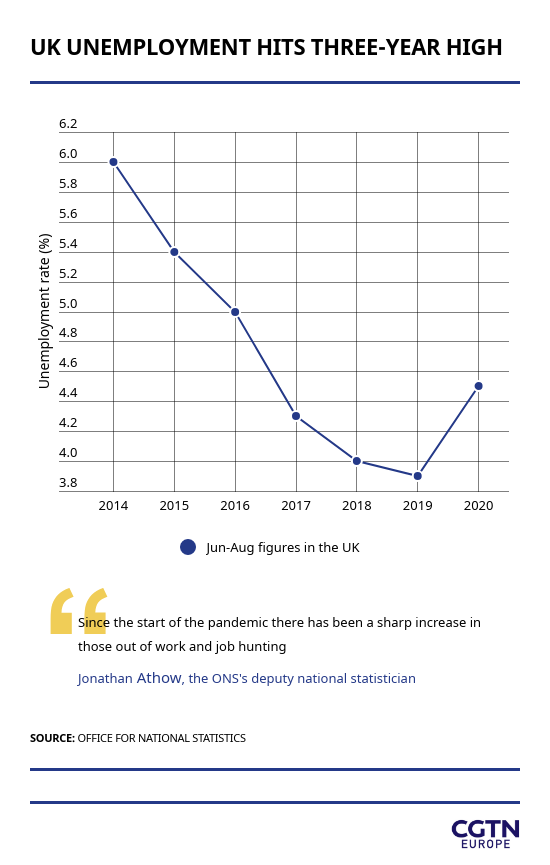
A person wearing a protective face mask walking past a Job Centre Plus office in the UK. /Reuters
A person wearing a protective face mask walking past a Job Centre Plus office in the UK. /Reuters
The UK's unemployment rate rose to its highest level in three years between June and August as the COVID-19 pandemic continues to take its toll on jobs.
The amount of jobless people grew to 4.5 percent, up from 4.2 percent in the previous quarter and 3.9 percent year-on-year, according to data released by the country’s Office for National Statistics (ONS).
It is estimated that 1.52 million people in the UK were unemployed between June and August, up 209,000 year-on-year and 138,000 from the previous quarter.
The annual increase was the largest since September to November 2011 and the quarterly increase was the largest since May to June 2009.
Statistics suggest men have been hit hardest – the unemployment rate reaching 4.9 percent between June and August 2020, a rise of 0.7 percent from the previous quarter. Meanwhile, women had a jobless rate of 4.0 percent, a rise of 0.1 percent from the previous quarter.

"Since the start of the pandemic there has been a sharp increase in those out of work and job hunting but more people telling us they are not actively looking for work," said Jonathan Athow, the ONS's deputy national statistician.
"There has also been a stark rise in the number of people who have recently been made redundant," he added.
The Uk's finance minister, Rishi Sunak, said on Tuesday his priority remained to slow the rising job losses. But added: "I've been honest with people from the start that we would unfortunately not be able to save every job."
Sunak is, however, replacing a $65.2 billion job-retention scheme, put in place earlier this year, with a less generous program at the end of October.

Paul Dales, chief UK economist at Capital Economics research group, said: "The latest batch of data show that the labor market has been somewhat weaker than previously thought and that the fallout from the COVID-19 recession is intensifying,"
He added: "What's more, the prospect of the latest COVID-19 restrictions leading to the economic recovery stalling, if not going into reverse, means worse lies ahead."
The Bank of England has forecast that the unemployment rate will hit 7.5 percent by the end of the year, but its governor, Andrew Bailey, admitted on Monday the recovery could be weaker than its estimates.
UK Prime Minister Boris Johnson on Monday tightened virus control measures as the nation experiences a surge in cases.
The northwest English city of Liverpool was the first area to be designated "very high risk" under a new three-tiered system.
From Wednesday, Liverpool will have inter-household mixing banned indoors and in private gardens, while pubs, bars, gyms, betting shops and casinos will close.
This has dealt a further huge blow to the hospitality sector and comes as the UK government's virus furlough scheme, paying the bulk of wages for millions of workers, is replaced from November by a watered-down program.
Kate Nicholls, CEO of UKHospitality, last week warned more than 560,000 jobs would be lost to the sector this year as the pandemic kills trade in bars, hotels, nightclubs, pubs and restaurants.
Britain's death toll from the virus is the highest in Europe at almost 43,000.
Source(s): AFP